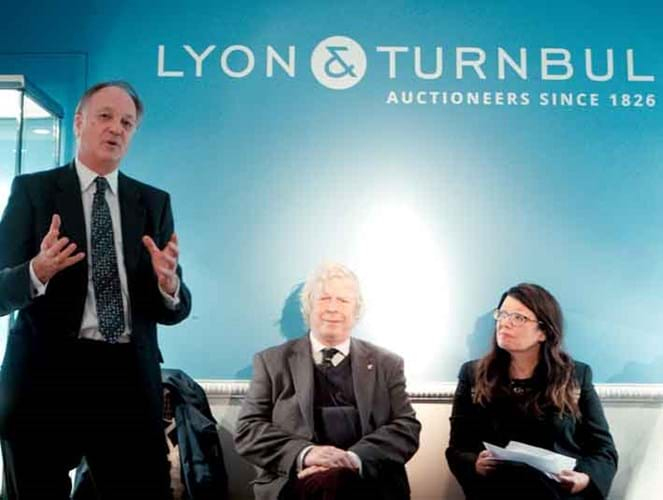
Addressing an audience at the Tomasso Brothers gallery in Duke Street, St James on Monday, November 9, Pamela Kember, head of arts and learning at Asia House, reminded us that reproductions, homages, venerations, copies and indeed fakes have been part of Chinese culture for centuries.
But has the market for Asian works of art reached a crossroads where the fakes are so good - and the rewards for successful deception so spectacular - that only science can help?
Also on the panel of three speakers for the New Perspectives on Connoisseurship open discussion (an Asian Art in London promoted by Lyon & Turnbull in association with ATG) was Dr Peter Northover who, since 1974 has been applying the principles of metallurgy in the service of archaeology art and antiques.
Buyers in the Asian art market (or in the marketplace for antiquities or early works of art) should all, he said, "become connoisseurs of science."
Working on the understanding that everything that happens in the life of a piece of metal can be read by science, he has seen the full spectrum of items on what he called the 'fakeometer'.
These range from bronzes that 'ring' when they are struck (the heavy lead content of early Chinese bronzers typically dulls the sound) to sophisticated confections fashioned from genuinely ancient material applied to a modern bronze core.
Invasive methods are necessary - "completely successful non-invasive techniques are a mirage and the more intervention the better the story we can tell" said Dr Northover - but the key is the databases against which results can be compared. He contrasted the 100,000 samples now available for Bronze Age metalwork (where he began his work) with the tens or hundreds available in other areas of study. It is here, he said, where the so-called Cranfield project, applying the principles of trace-element analysis to Chinese porcelain, must focus its energies.
"Science reassures but isn't the be all and end all"
Roger Keverne, the London dealer in Chinese works of art who began his career working at Spink aged 21, began his enlightening slot with a dual apology.
He was fearful he would be interrupted by a phone bid from (he was, and seamlessly weaved his pursuit of a bronze censer at Bonhams into subject of his lecture) and that he would inject the cynicism of the old-school dealer into proceedings (he did, but his arguments were highly persuasive).
"Science reassures, makes the task a little easier but it isn't the be all and end all," he said. He referenced the thermoluminescence (TL) test - a great breakthrough in the dating of pottery object in the 1970s whose credentials have been weakened with the passage of time.
"Any scientific test is going to be challenged. As soon as science finds an answer there will be a way round it," he said.
With fakery assuming new levels of invention and sophistication - including the insertion of works of art into period photographs - Keverne acknowledged the need for auction houses in particular to exercise great caution when cataloguing objects where the element of doubt exists.
He told the audience that he understood that the final invoice for the so-called 'Bainbridge vase' did not commit to dating the piece as from the reign of Qianlong.
Future Scholars
Keverne suggested that next great scholars in this area - and possibly the great scientists too, says Dr Northover - will most likely come from the Far East. It stands to reason that as the art moved back to China then so will the knowledge bank.
But he fears the traditional approach to connoisseurship is changing in the digital age - contrasting his experience as a 25-year-old studying the Alfred Clark collection of Ming blue and white at Spink and those who now do their learning at a computer screen. He emphasised the need for the next generation of collectors to return to the first principles of "look, look, compare, compare".
"It's very boring and I have been doing it too long" he quipped.
• One item that did seem to be the genuine article was the spectacular Thornhill Xuande (1426-35) mark and period blue and white dragon stem cup from the collection of Stafford University that L&T were displaying in a cabinet below stairs. It attracted regular crowds during its two days in London in advance of a spring sale in Hong Kong.





